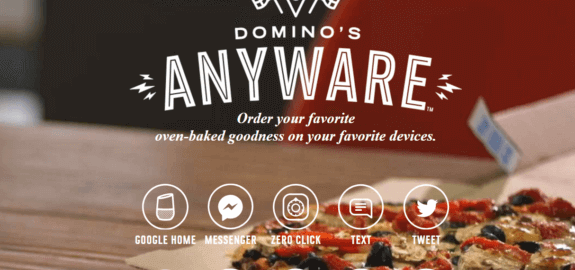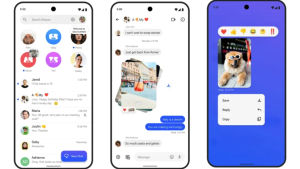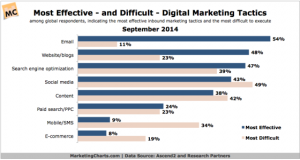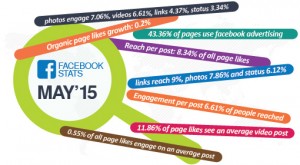Bots are sweeping the digital landscape, giving consumers even more ways to interact with their favorite brands. Columnist Christie Olson believes it’s high time for marketers to think about how to incorporate bots into their digital strategies.

Conversations.
We seem to be talking about talking an awful lot these days — and that’s no surprise, considering the advances in artificial intelligence, machine learning and natural language processing that have made interactions with technology more conversational and human. It’s leading the way to conversations about how businesses can, could, will and should be using bots to drive more personalized conversational interfaces with their customers.
Back in 2011, Gartner predicted the following:
By 2020, customers will manage 85% of their relationship with the enterprise without interacting with a human.
I already prefer to use an ATM rather than visit the bank, and I go to the self-checkout stands at the grocery store. In this context, it’s not hard to imagine how conversational bots can become an extension of a self-service interface to your brand across the platform and channel your customers choose.
Bing already has a few bots integrated directly into the search results page. In the video below, you can see how I’ve utilized the bot to quickly discover the parking situation for a nearby restaurant and to make sure it offers vegetarian dishes for my coworkers.
We are seeing the rise of artificially intelligent agents providing answers and communicating with us and each other, and it’s time for marketers to take a look at how they can incorporate these technologies into their own digital marketing strategy.
What are bots and chatbots?
In this context, there isn’t a difference. In the beginning, bots were just pieces of software that were designed to automate and complete specific tasks. Today, bots have evolved due to advances in machine learning and natural language processing to pick up and simulate conversation. They are acting as your interface across devices and can be plugged into APIs or various data sources to deliver information on demand and help drive conversational commerce and actions.
What’s the difference between bots and digital assistants?
A digital assistant like Cortana, Siri, Alexa or the Google Assistant is more complex than a chatbot. In additional to being able to parse conversational language like a chatbot, they also incorporate additional layers of artificial intelligence to help merge utility, productivity, entertainment and the ability to accomplish actions together to become an intelligent agent. Cortana is a predictive and proactive agent that, with frequent user interactions, can learn to act and intercede on your behalf.
Where do ‘skills’ fit in?
A skill teaches the digital assistant how to do something or to take an action, based on a voice command. I might say, “Hey Cortana, ask HUE to dim the kitchen lights” or “Hey Cortana, ask OPENTABLE to reserve a table at John Howie Steak at 7 p.m.”
Conversational commerce: Connecting the dots
What is conversational commerce? It’s using AI-infused technology to engage with consumers in a more natural and conversational manner.
Let’s look at an example of conversational commerce in play. When it first launched, the Domino’s Facebook Messenger chatbot was super simple, but effective: by simply typing the word “Pizza,” users with an online account were able to choose between a recent order or a pre-defined “Easy Order.”
The bot wasn’t really a chatbot in the sense that it wasn’t conversational in nature, but it started with a simple, easy-to-use feature that allowed Domino’s to get their foot in the door to test and learn.
Currently, Domino’s has a true conversational commerce chatbot, Amazon Alexa skills, and more ways to order via various channels and devices. The increased complexity of the bot’s AI allows users to build an order from scratch, in addition to tracking an order, placing an “Easy Order,” or reordering the most recent order.
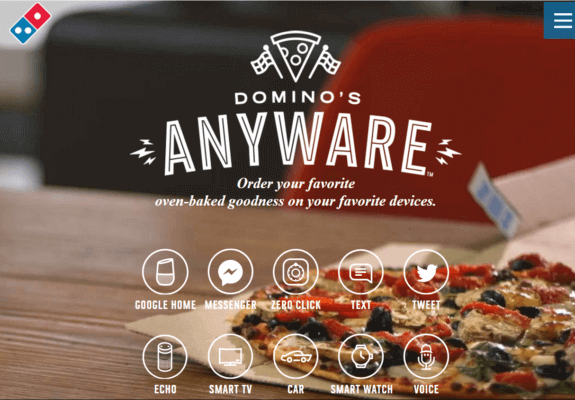
Let’s take a high-level look at getting started with bots and what you need to keep top of mind as you get started.
Tips for getting started with bots
1. Plan. Set goals and expectations for what your bot can do. Focus on interactions that mean the most to your customers. (It’s not about you!)
2. Start simple. Focus on building a bot that works amazingly and will delight your customers. Keep it simple at first. If you plan to make it complex, consider releasing new features in stages so as not to overwhelm your customers. Integrate the features into the flow of the conversation where they make sense.
3. Develop your bot. Choose a frame, like the Microsoft bot framework, that can help you scale across channels. Don’t try to launch across every channel at first. Take a “test and learn” approach, and stagger your rollout across features and channels.
4. Monitor bots closely. Mistakes are inevitable. Learn from them and fix any identified errors/mistakes often and quickly.
- Examine it: What questions did people ask that the bot wasn’t able to answer?
- Teach it: What words does the bot not understand? Does it not get that veggie is another term for vegetarian?
- Humanize it: Does the tone of your brand shine through? Make the experiences more engaging.
Ask your customers for feedback, especially early on. Give your customers the option at the end of the session to participate to help make the bot better! Learn from customer interactions and feedback to generate smarter, more personalized interactions.
- Rinse & repeat. Iterate and adapt your bot regularly to make it even better and keep customers coming back for more.
Bot commerce is the future
The world loves a good conversation, and bots and skills are opening up ways to communicate directly and more conversationally with your customers, providing them with a more “natural” experience. Bots can also give your business a deeper look into your customers’ experience, including their emotions and sense of urgency during the interactions. This data can help you provide more personalized experiences that create a more meaningful connection with your customers.
So, what are you waiting for to get started?
Some opinions expressed in this article may be those of a guest author and not necessarily Marketing Land. Staff authors are listed here.
Marketing Land – Internet Marketing News, Strategies & Tips
(113)
Report Post